For years, flying economy has felt like a test of human endurance—cramped seats, zero legroom, and the constant fear of the person in front reclining into your personal bubble. But hold onto your tiny aeroplane pretzels, because something miraculous is happening in the aviation world.
As per Conde Nast Traveller, these 3 Airlines are reportedly trying to give economy passengers more space to exist as human beings rather than sardines in a metal tube.
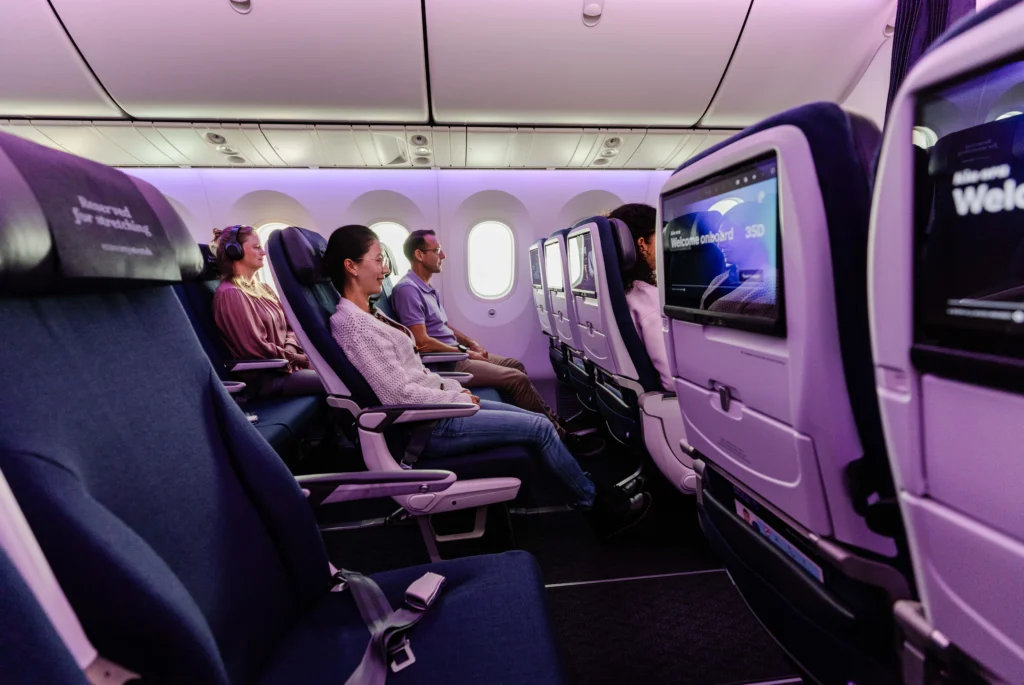
Why Airlines Are Changing Their Tune
The aviation industry has spent decades perfecting the art of squeezing passengers into impossibly small spaces, all in the name of profit maximisation. However, this trend is finally showing signs of reversal, particularly for long-haul international flights.
Airlines are beginning to recognise that passenger comfort isn’t just a luxury—it’s becoming a necessity.
Anthony Harcup, the founder and CEO of aviation interior design firm DeepBlue Studios, recently highlighted this shift during an interview on the Aircraft Interiors podcast. He emphasised that airlines have finally understood what travellers truly desire: comfort.
The focus is shifting toward premium economy and standard economy cabins, where significant improvements are being made in terms of seat design, materials, and overall passenger experience.
The driving force behind this transformation isn’t purely altruistic. Modern aircraft are capable of flying unprecedented distances, creating ultra-long-haul routes that can keep passengers airborne for 15-20 hours or more.
When you’re asking someone to spend nearly a full day in the air, providing basic human comfort becomes less of a courtesy and more of a survival requirement.
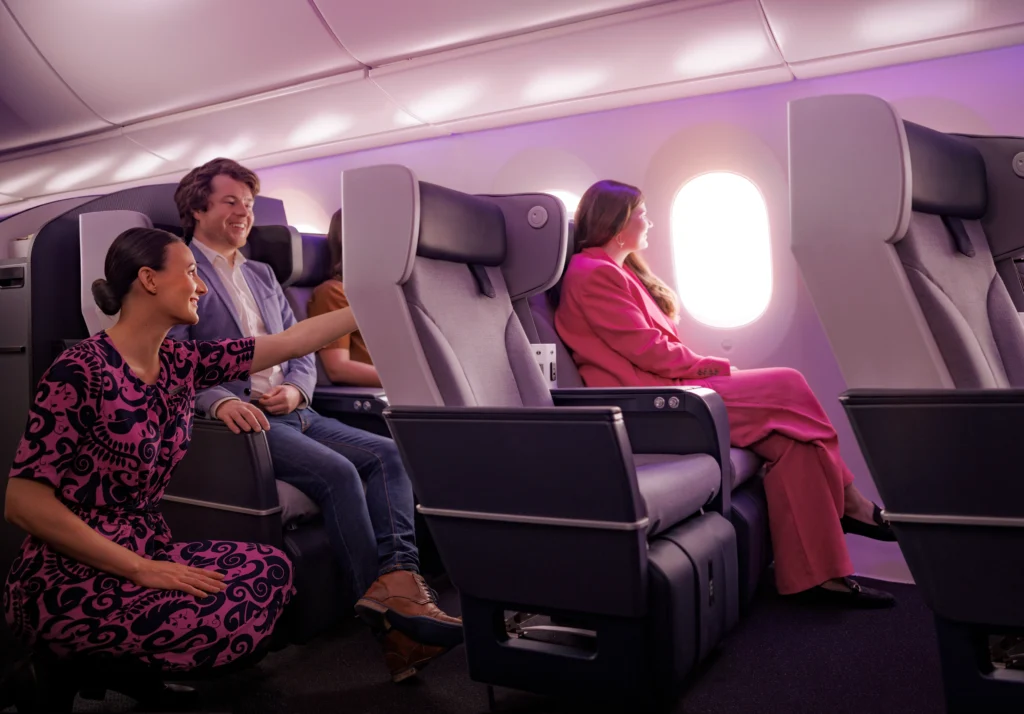
Innovation Through Design
The secret to providing more legroom without completely sacrificing airline profitability lies in smarter design and engineering. Newer aircraft models come equipped with advanced interior configurations that allow airlines to optimise space usage more effectively.
Lightweight materials, better seat sculpting, and improved ergonomics mean that passengers can have more personal space without airlines needing to remove entire rows of seats.
This technological advancement represents a significant departure from the traditional airline approach of simply cramming more seats into existing spaces.
Instead, manufacturers and airlines are working together to create innovative solutions that benefit both parties—airlines maintain their revenue potential while passengers enjoy a more tolerable flying experience.

Leading the Charge
All Nippon Airways (NH)
Japanese carrier All Nippon Airways (NH) is positioning itself as a leader in economy comfort with its updated Boeing 787-9 Dreamliner fleet. The airline’s new economy configuration offers an impressive seat pitch ranging from 33 to 34 inches, representing some of the most generous legroom specifications currently available in the economy segment.
Beyond just raw space, ANA has redesigned the seat backs to provide an additional inch of knee room—a small change that makes a significant difference during long flights. The seats also feature enhanced ergonomics, an extra two inches of recline capability, and modern amenities including AC power outlets, both USB-A and USB-C charging ports, and Bluetooth audio connectivity for personal devices.
These improvements will begin appearing on ANA’s long-haul international routes starting in 2026, with the Tokyo-Hawaii corridor being among the first to receive the upgraded cabins.
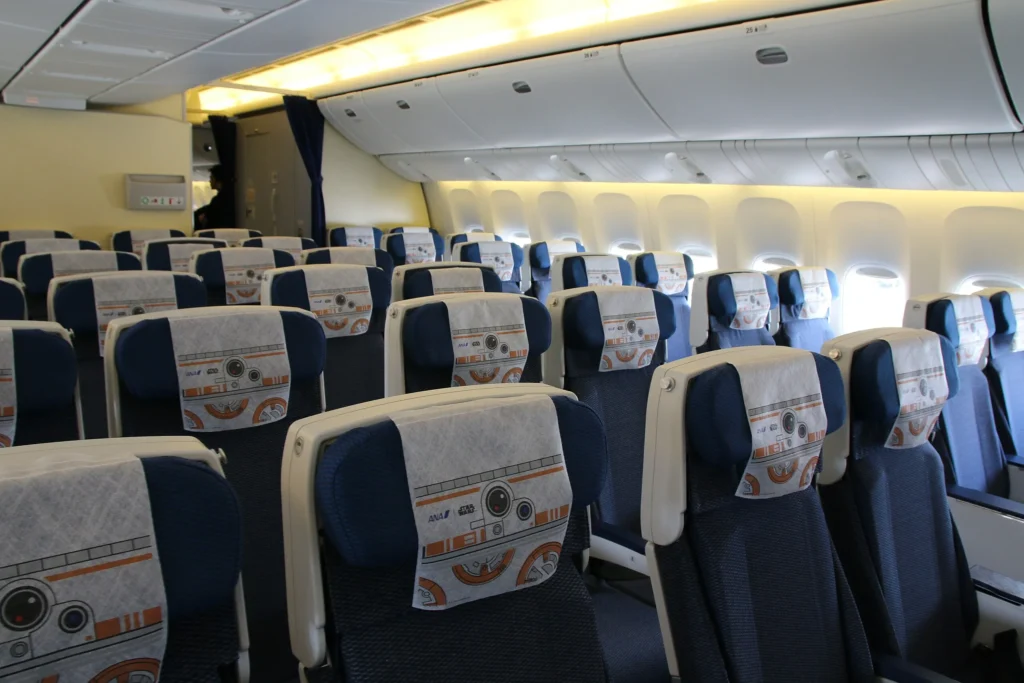
Swiss International Airlines (LX)
Swiss International Air Lines (LX) is launching an ambitious cabin redesign project called “Swiss Senses” in summer 2025. This overhaul will affect all cabin classes across the airline’s long-haul fleet, with particular attention paid to economy passenger comfort.
The new Swiss economy configuration increases seat pitch to 33 inches, providing passengers with an additional inch of space compared to the airline’s current long-haul economy setup. Additionally, seat width has been expanded to 19 inches, offering passengers slightly more shoulder room and personal space.
Other comfort improvements include 6 inches of recline capability, individual USB charging ports, and Bluetooth audio connectivity. The Swiss Senses concept will debut on the airline’s new Airbus A350 aircraft before being retrofitted to existing A330 and Boeing 777 planes throughout the fleet.

Qantas Airways (QF)
Australian carrier Qantas (QF) is taking economy comfort to new heights with its ambitious “Project Sunrise” initiative, scheduled to launch in 2027.
This groundbreaking project will introduce the world’s first nonstop flights connecting Sydney (SYD) with London (LHR) and New York (JFK) aboard new Airbus A350-1000 aircraft.
Given that these flights will potentially last up to 22 hours, Qantas (QF) recognises that passenger comfort isn’t optional—it’s essential for passenger wellbeing and airline reputation.
The new economy cabin will feature the airline’s most spacious seat pitch at 33 inches, combined with 18-inch-wide seats that provide slightly more room than current long-haul configurations.

Qantas Economy Amenities
Beyond basic seating improvements, Qantas (QF) is introducing innovative amenities designed specifically for ultra-long-haul travel. Each economy passenger will have access to 2 USB-C charging ports and a large 13.3-inch entertainment screen with Bluetooth connectivity.
Perhaps most notably, the airline is creating a dedicated “wellbeing zone” at the front of economy class where passengers can move around, access self-serve refreshments, and participate in guided stretching exercises.
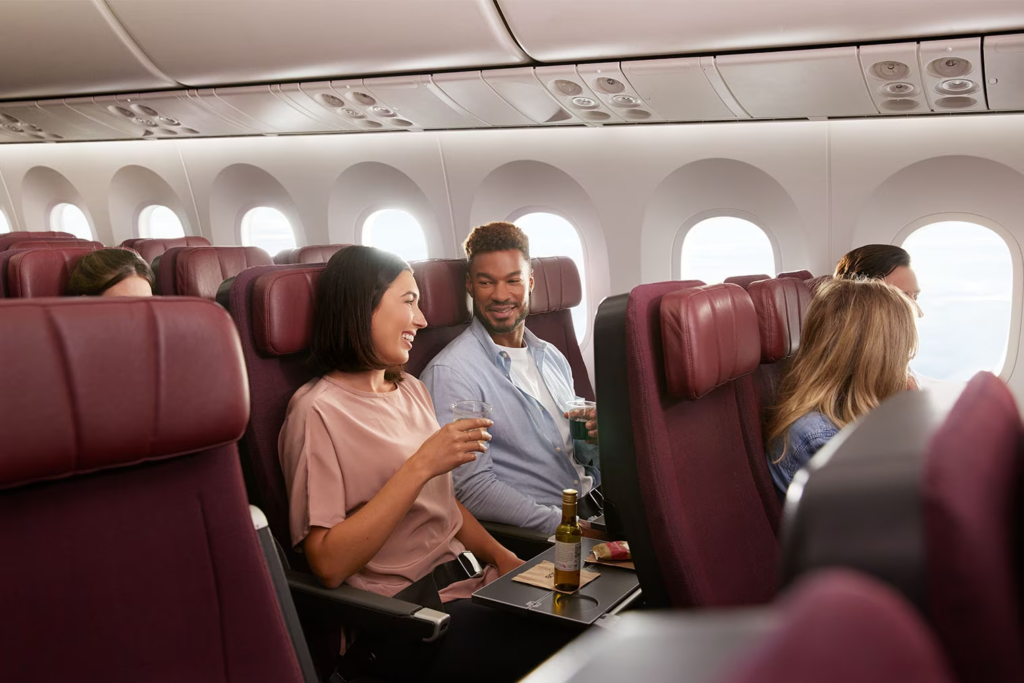
What This Means for Future Travel
These improvements by major international carriers signal a broader shift in airline industry priorities. As competition intensifies and passenger expectations evolve, airlines are discovering that comfort can be a significant differentiator in attracting and retaining customers.
The focus on economy class improvements is particularly significant because it affects the largest segment of air travellers.
While business and first-class passengers have long enjoyed generous space and premium amenities, economy passengers have traditionally been an afterthought in cabin design decisions.
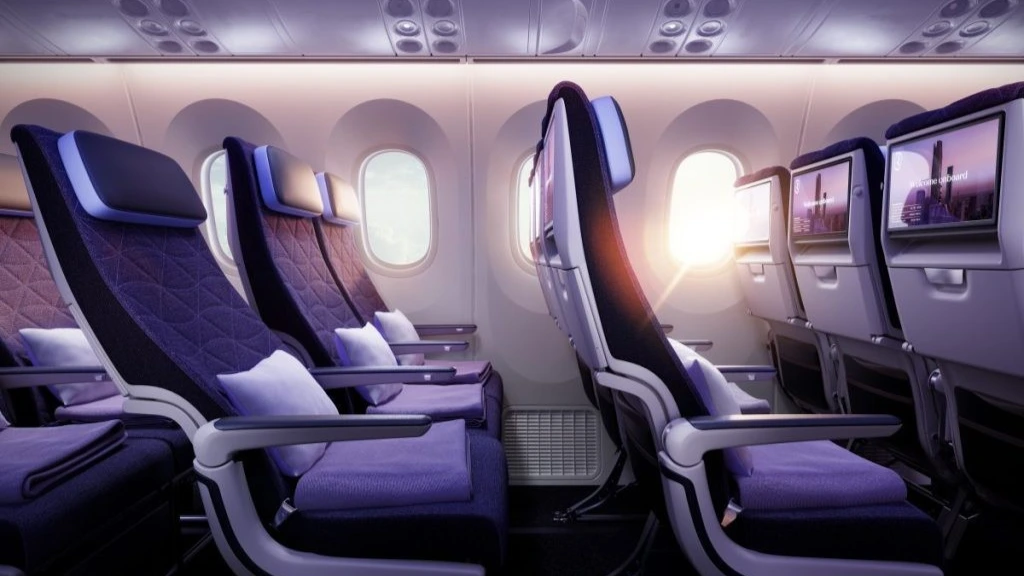
Bottom Line
After decades of treating economy passengers like human cargo, airlines are finally remembering that happy customers tend to be repeat customers.
While we’re not quite at the point where economy feels like a luxury experience, the fact that airlines are voluntarily giving passengers more space feels nothing short of revolutionary.
So the next time you board a long-haul flight and discover you can actually bend your knees without performing yoga contortions, take a moment to appreciate this small miracle of modern aviation. Your legs will thank you, and your chiropractor might finally get a break!
Stay tuned with us. Further, follow us on social media for the latest updates.
Join us on Telegram Group for the Latest Aviation Updates. Subsequently, follow us on Google News
The post These 3 Airlines Will Add More Legroom in Economy Class appeared first on Aviation A2Z.

